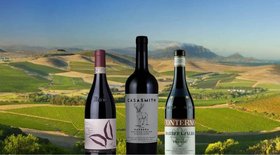Marchesi Antinori, Tuscany: 10 Best Wines, Vineyards (2025)
Marchesi Antinori is one of the most iconic Super Tuscan producers, who’s been in the wine business for over six centuries.
Today the winery continues to innovate and produce mind-blowing red blends. For the past 49 years, Piero Antinori (the 25th generation) has been the driving force behind the Antinori wines while spearheading the renaissance of Italian wine.
In this article, we’ll look at Antinori’s vineyards, history, best wines, and their investment potential.
Further reading
- Discover what makes a Super Tuscan special and some of the best labels.
- Check out other Great Italian Red Wines and the best bottles to buy in 2024.
A Quick Intro to Marchesi Antinori

Here is all you need to know about the Antinori winery:
Where is the Antinori winery in Italy?
The estate is headquartered in the Chianti Classico region (San Casciano Val di Pesa) between Florence and Siena.
Who Owns the Antinori Winery?
The family-owned wine company started with Giovanni di Piero Antinori in the 1300s and has lasted for 26 generations.
The innovations of the Antinori family played a significant role in the “Super Tuscan” revolution of the 1970s.
Today, Marquis Piero Antinori and his three daughters Allegra, Alessia, and Albiera Antinori (the 26th generation) oversee the firm’s activities. Alessia Antinori represents the Antinori family on the board of Primum Familiae Vini (fine wine association.)
What is Antinori Wine? (Wine Styles)
The winery is most famous for its red wine blends made from Cabernet Sauvignon, Merlot, Cabernet Franc, and Sangiovese. The most famous Antinori red wines are Tignanello and Solaia.
Antinori also produces Chianti Classico and a small amount of white wines from Pinot Grigio, Reisling, Pinot Bianco, Trebbiano, and Malvasia Toscana.
This Italian wine producer releases around 20 million bottles annually and has over 150 labels.
Now, what is “Villa Antinori”?
Villa Antinori
In 2012, Marchese Antinori opened a new winery named Villa Antinori Nel Chianti Classico.
What Kind of Wine Styles are Produced at Villa Antinori?
Villa Antinori produces a mix of Chianti and Super Tuscan wine labels, including:
- Villa Antinori Toscana (Super Tuscan)
- Villa Antinori Bianco Toscana (white blend)
- Marchese Antinori Chianti Classico Riserva
- Villa Antinori Chianti Classico
- Vinsanto del Chianti Classico
- Peppoli Chianti Classico
Ready to find out the best Antinori wines that you could experience?
10 Exceptional Antinori Wines (Including Tasting Notes, Prices)
Here are just a few of our favorite picks from this Italian winery:
1. 1978 Marchesi Antinori Solaia Toscana IGT ($568)
2. 1990 Marchesi Antinori Solaia Toscana IGT ($422)
3. 2010 Marchesi Antinori Solaia Toscana IGT ($328)
4. 2020 Marchesi Antinori Villa Antinori Tenuta Monteloro Pinot Bianco Toscana IGT ($13)
5. 2017 Marchesi Antinori Villa Antinori Riserva Chianti Classico DOCG ($27)
6. 2015 Marchesi Antinori Ampio delle Mortelle Toscana IGT ($146)
7. 1985 Marchesi Antinori Secentenario, Vino da Tavola ($135)
8. 1971 Marchesi Antinori Tignanello Toscana IGT ($571)
9. 2005 Marchesi Antinori Tignanello Toscana IGT ($221)
10. 2016 Marchesi Antinori Tignanello Toscana IGT ($173)
1. 1978 Marchesi Antinori Solaia Toscana IGT ($568)
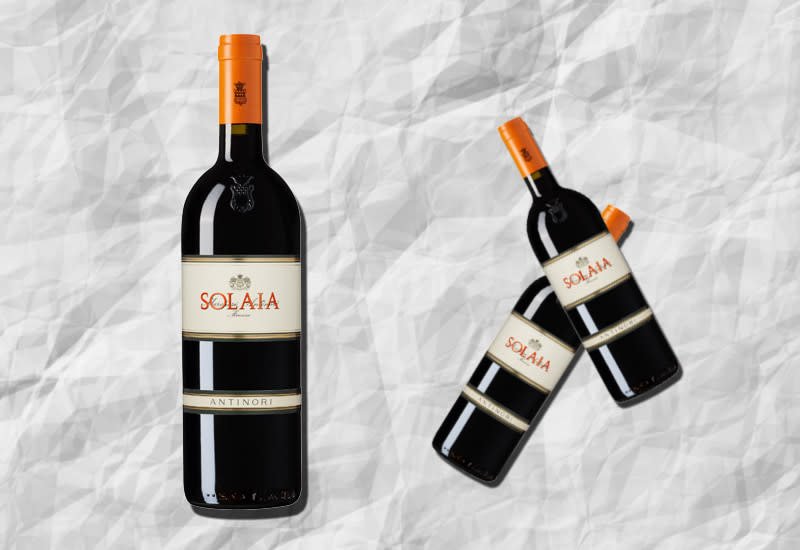
This great wine has a bouquet of leather, vegetation, and lead notes intertwined with ripe tannins and ample fruitiness.
It has a delicious finish with tasting notes of cherry, ripe dark fruit, and black currant with mineral qualities and bright acidity.
2. 1990 Marchesi Antinori Solaia Toscana IGT ($422)

This gorgeous Solaia is one of the finest Antinori wines. It has a dark magenta color and opens up with a bouquet of blueberries, lead pencil, black currant, and sweet spice.
It has a big flavor that dominates the palate with mature, fine tannins. The finish leaves you with a pleasant aftertaste of dark fruit notes, minerality, and a hint of licorice.
3. 2010 Marchesi Antinori Solaia Toscana IGT ($328)

This fantastic wine has a deep ruby red color and an expressive nose that displays sweet spice and red berry fruit notes. Its notable freshness is accompanied by an admirable balance and elegance on the palate.
4. 2020 Marchesi Antinori Villa Antinori Tenuta Monteloro Pinot Bianco Toscana IGT ($13)

This delicate white wine has a pleasantly dry palate and a vibrant tropical fruit nose. The palate reveals complex citrus, peach, and green apple notes, accompanied by a delicate minerality.
5. 2017 Marchesi Antinori Villa Antinori Riserva Chianti Classico DOCG ($27)
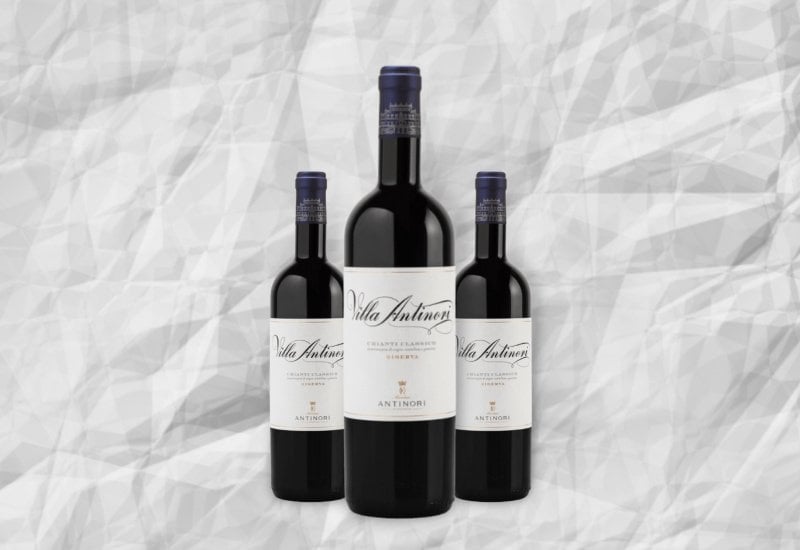
Here we have a great Chianti wine with a medium body and an opulent aroma bouquet of vanilla and smoke. The flavor profile has juicy red fruit hints with oak, chocolate, and earth undertones.
6. 2015 Marchesi Antinori Ampio delle Mortelle Toscana IGT ($146)

This intense vintage has seductive aromas of black pepper and mint, backed by blueberries, blackberries, and black currant notes. This great wine is generous and complex, with a firm and silky tannic texture on the palate.
7. 1985 Marchesi Antinori Secentenario, Vino da Tavola ($135)

This is a special vintage released in a magnum to celebrate the 600th anniversary of Villa Antinori. It is a blend of Cabernet Sauvignon, Cabernet Franc and Sangiovese varietals from the Tignanello vineyard.
It has a sweet start with loads of acidity and melded tannins.
8. 1971 Marchesi Antinori Tignanello Toscana IGT ($571)
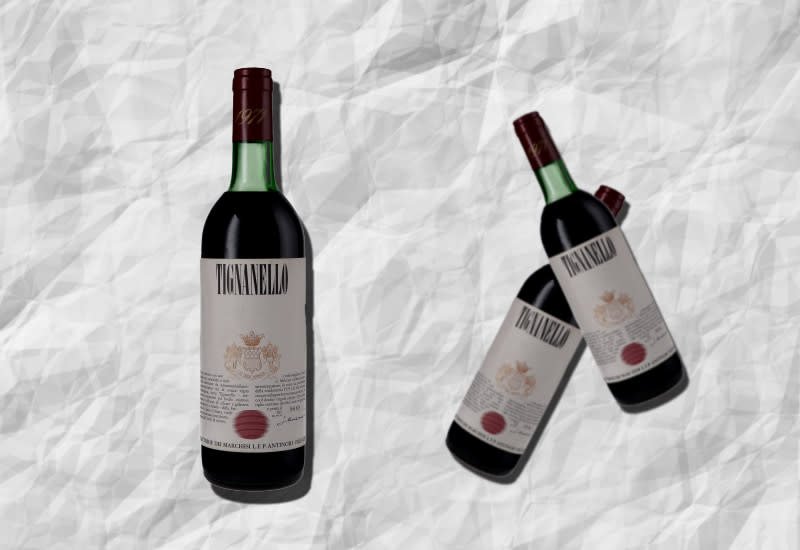
This Tuscan wine has notable freshness and a nose that opens with mature, forward, and complex notes.
It has a vivid taste, high tannin level, and full-body, making this wine concentrated and mature on the palate. Enjoy the intense flavors of tobacco, vanilla, nuts, plum, and cherries that evolve over time!
9. 2005 Marchesi Antinori Tignanello Toscana IGT ($221)

This great wine opens up with blackberry fruit aromas and a dense palate. It is sophisticated and stylish, balanced beautifully by the tannin levels and bright acidity.
It has a long, delicious finish with coffee, marmalade, and chocolate hints.
10. 2016 Marchesi Antinori Tignanello Toscana IGT ($173)

This is a vibrant and harmonious wine with great aging potential. This wine’s brisk acidity brings out the intense flavors of black cherry, plum, and blackberries that evocatively evolve on the palate.
This silky-textured Tuscan wine reveals tasting notes of dark chocolate, tobacco, and subtle spice.
Should you invest in Antinori Wines?
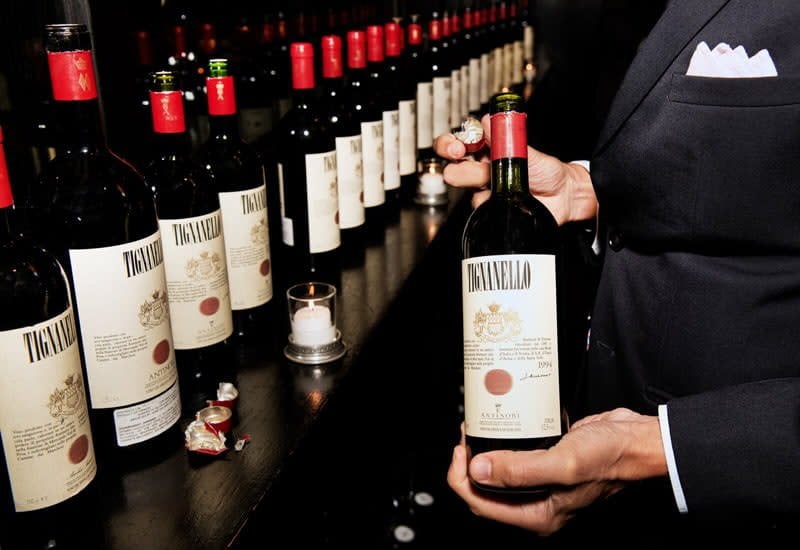
Super Tuscans have enjoyed decades of success in the US and Europe, increasing interest in the Far East and Hong Kong markets.
While Solaia (3,000-7,000 cases annually) is slightly pricier than Tignanello (20,000-30,000 cases,) both of these terrific wines have become hot investment targets over the years. Despite the higher production of Tignanello, this Super Tuscan sells out within days due to the high demand.
Tignanello offers more value than other Super Tuscan wines. It regularly gets high critic scores, and with the continued rise in quality, it is the perfect addition to any wine investment portfolio.
Additionally, according to the Tignanello (Liv-Ex) index, it saw a 27% price increase in 2017, making it one of the best-performing investment wines in the market. Older vintages continue to perform well - the 1971 Tignanello had a 108% increase in price, going from $312 in 2020 to $649 in 2022.
Solaia is also known for consistently receiving high scores from wine critics, with the 2015 vintage being rewarded a perfect 100 by Robert Parker and 98 points by the Wine Spectator.
Solaia is known to age gracefully in the cellar for up to 30 years, while its price increases steadily over time. The 1995 Solaia price grew by 44%, from $244 in 2020 to $350 in 2022.
In 2020, Antinori was the only Italian wine producer with two wines featured on the prestigious Liv-Ex Power 100 list.
No doubt, getting your hands on one of these Super Tuscans will add immense value to your wine portfolio.
But, where to buy an authentic bottle of Antinori wine?
You can use the help of a trusted online wine investment company like Vinovest. The AI-based platform will assist you in buying, storing, and selling Antinori and other fine wine labels. You can also ship your wine everywhere in the world, including New Zealand, the United Kingdom, and South Australia.
The Marchesi Antinori Vineyards And Wines
Marchesi Antinori has been making terrific wines for over 600 years. Although the wine production techniques have been steeped in tradition, the winemakers have never shied away from modernization and innovation.
Next, let’s see where the Antinori vineyard estates are:
1. Tignanello
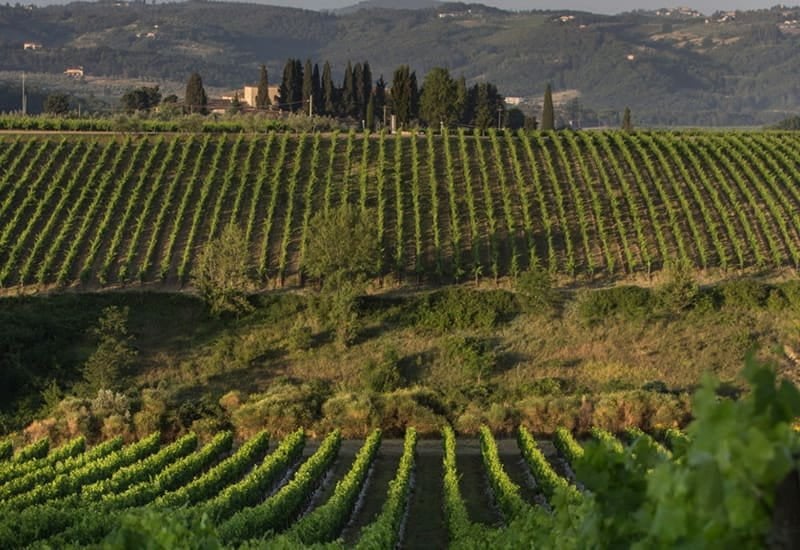
This 47-hectare vineyard, also known as Tenuta Tignanello, is found within the Santa Cristina estate, and it’s named after its most famous wine.
Giacomo Tachis is in charge of producing the great Tignanello Super Tuscan. The wine is a blend of Sangiovese (85%), Cabernet Sauvignon (10%), and the Cabernet Franc (5%) grape variety.
The grape varieties from the Tenuta Tignanello estate are also used to produce the Marchese Antinori Riserva.
2. Solaia
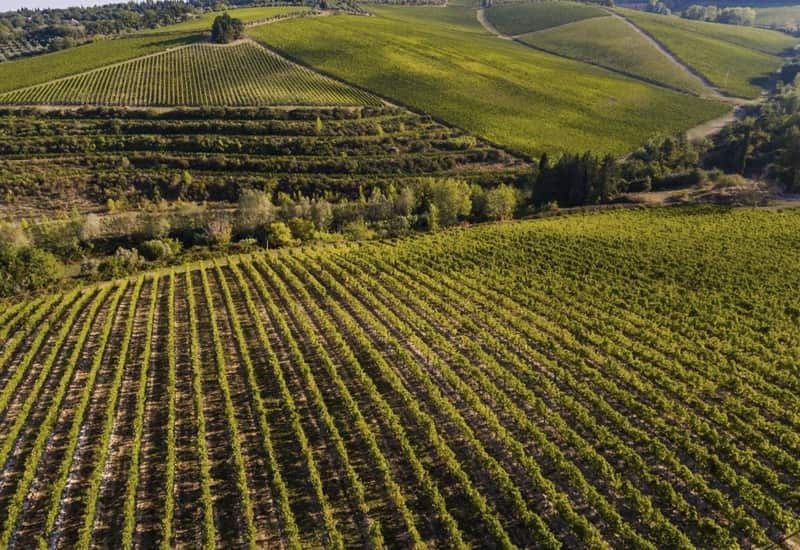
Solaia (meaning “The Sunny One”) is in the Mercatale Val di Pesa zone of the Chianti Classico region. Fruit not used for the Grand Vin goes into the making of Chianti Classico Riserva, IGT Villa Antinori, and Tenute del Marchese.
Solaia is crafted by the Antinori winemaker Renzo Cotarella since 1990. This red is a blend of Cabernet Sauvignon (75%), Cabernet Franc (5%), and Sangiovese (20%).
3. Peppoli Estate
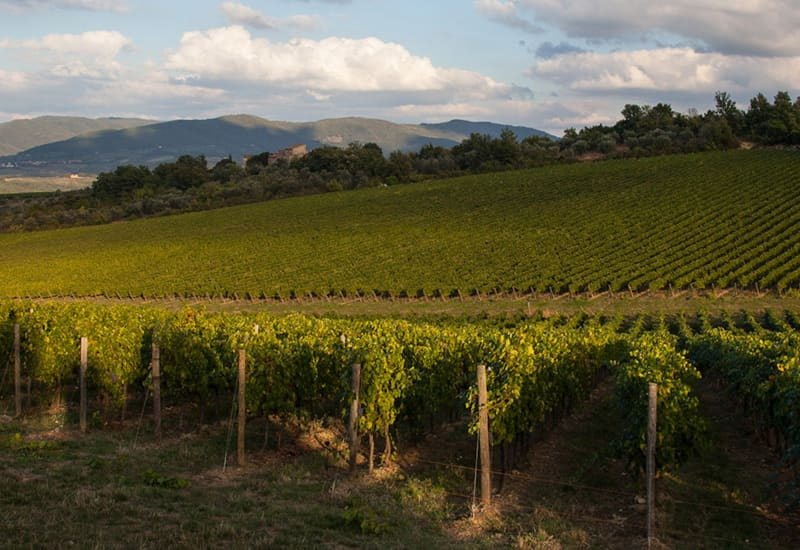
Over 55 hectares of this 100-hectare estate are under vine. The grape varieties harvested from this estate produce a fruity Peppoli Chianti Classico.
This gorgeous estate also has 26 hectares of olive groves, used to produce the popular Peppoli Extra Virgin Olive Oil.
4. Badia a Passignano
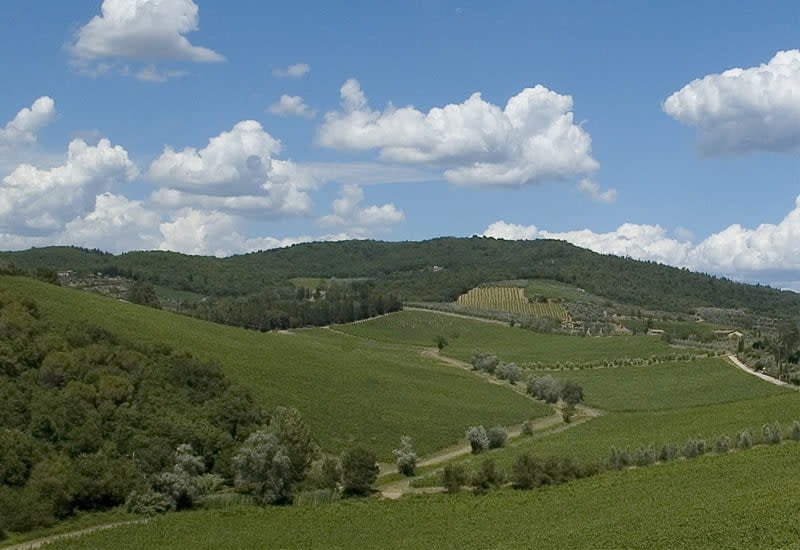
Around 50% of this 325-hectare Antinori estate is planted with the Sangiovese grape variety (originally from the Tignanello vineyard), and the remaining has Cabernet Sauvignon and Syrah vines.
The fruit is used to make Badia a Passignano and another Sangiovese wine, Chianti Classico DOCG Riserva.
5. Guado al Tasso
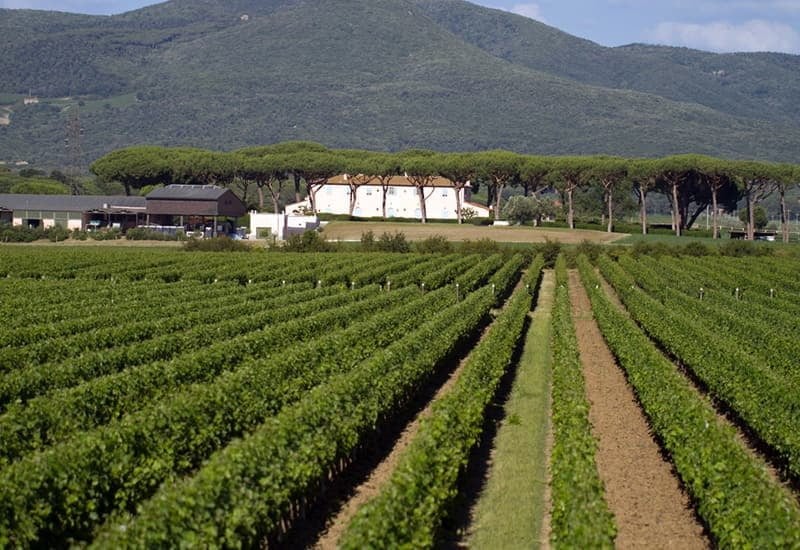
Only a third of Tenuta Guado Al Tasso in the Bolgheri appellation is growing vines (Sangiovese, Syrah, Petit Verdot, and Merlot.) These Bolgheri grapes are used to craft the Scalabrone Rose, Guado al Tasso, Vermentino, Il Bruciato, and the lesser known Guado al Tasso Matarocchio.
6. Pian delle Vigne
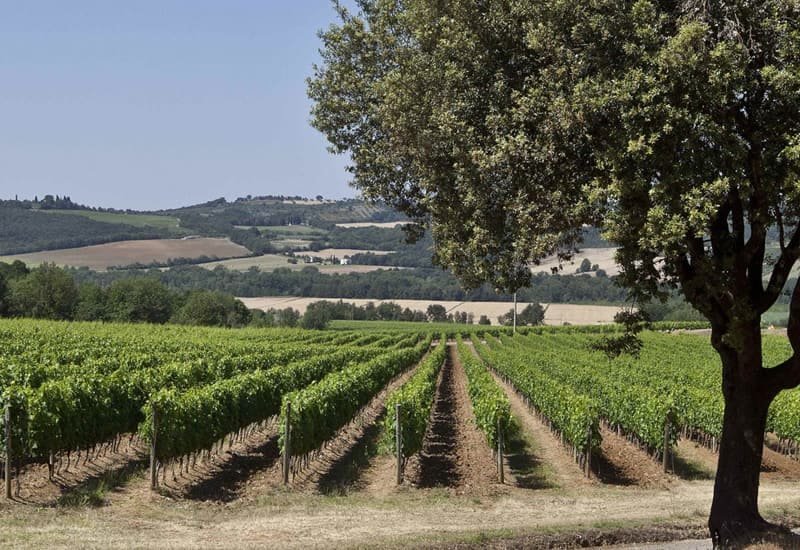
The Pian delle Vigne estate in Montalcino has over 65 hectares under vine. The Brunello di Montalcino DOCG and Brunello di Montalcino DOCG Riserva are produced here.
This vineyard also produces the fruit for the Grappa Riserva di Brunello di Montalcino, Pian delle Vigne, and Rosso di Montalcino DOC.
7. Castello Della Sala
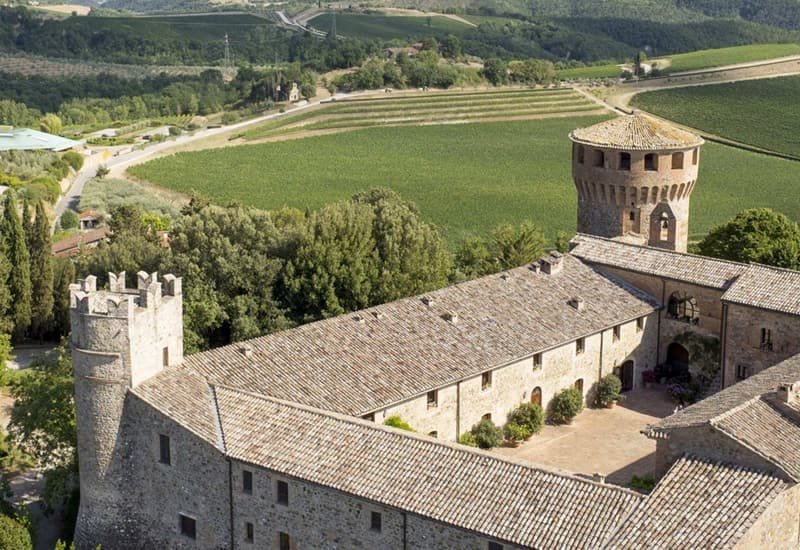
The Castello Della Sala vineyard is situated in Umbria. This 160-hectare vineyard is planted with Sauvignon Blanc and other white grape varieties. The vineyard produces the Campogrande, Orvieto Classico, Pinot Nero, Casasole, the Cervaro Della Sala, and the sweet Muffato Della Sala wine labels.
8. Antica Napa Valley
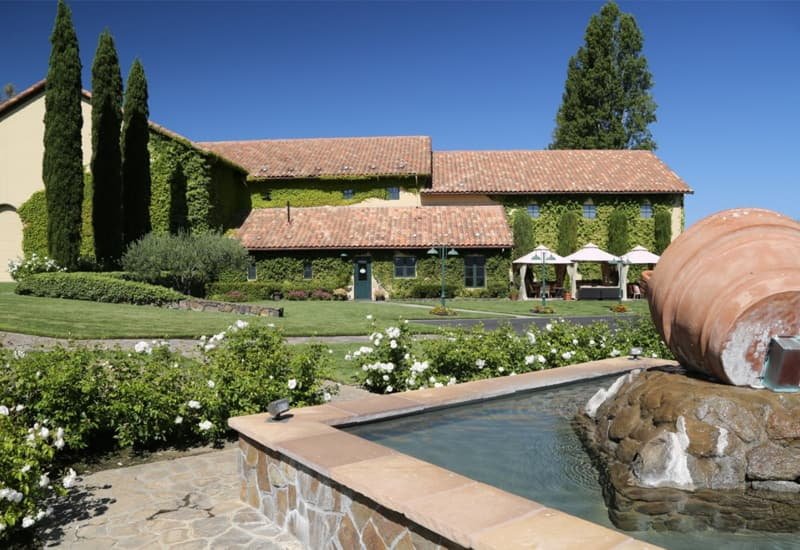
The Antica wine estate is located in Napa Valley, California. This 242-hectare vineyard in Atlas Peak grows Sangiovese, Cabernet Sauvignon, Cabernet Franc, Pinot Noir, and the white grape varietals Chardonnay and Sauvignon Blanc.
9. Other Vineyard Estates
The Antinori family also owns:
- Fattoria Aldobrandesca (Etruscan vineyard)
- Monteloro winery (Florence)
- La Braccesca winery (producing Vigneto Santa Pia, Vino Nobile di Montepulciano La Braccesca, Sabazio, and the Bramasole and Achelo Syrahs)
Next, let’s take a look at the winery’s rich history.
The Origins of the Marchesi Antinori Winery
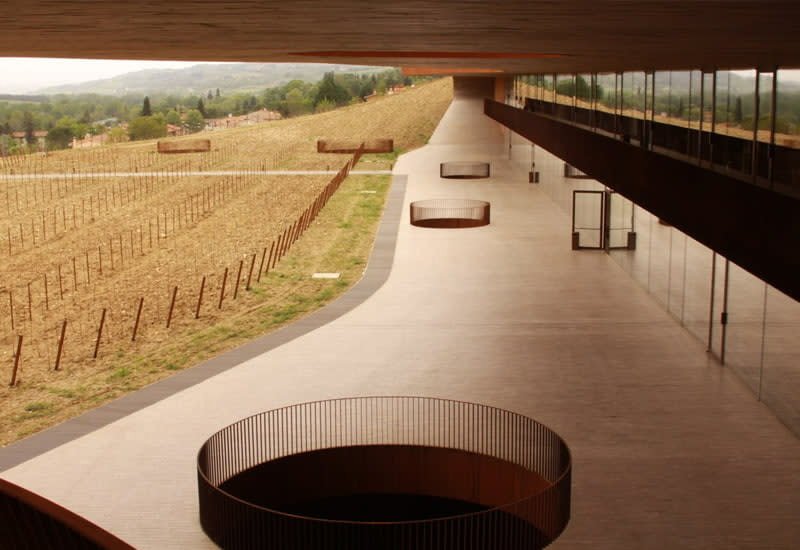
This Italian wine company started when Giovanni di Piero Antinori joined the Florentine Winemakers Guild (Arte Fiorentina dei Vinattieri) in the 14th century.
The Antinori family bought the Piazza Antinori (Palazzo Antinori) in Florence in 1506 and gained the title of Marquis in the 18th century.
In 1900, Marchese Piero Antinori purchased 47 hectares of vineyards in the Chianti Classico region.
In 1924, Marchese Niccolò Antinori, son of Piero, bought properties including Santa Cristina and Castello della Sala (Umbria.)
After Marchese Niccolò Antinori retired in 1966, his son started experimenting with early harvesting of white grape varietals and malolactic fermentation of their red wines.
Winemaker Giacomo Tachis joined Antinori in 1961. He introduced non-indigenous grapes and new winemaking techniques, including malolactic fermentation and bottle aging.
In 1974, Antinori launched the first vintage of Tignanello. Following the success of this red wine, Antinori launched Solaia in 1978 from grape varietals from a neighboring vineyard.
The Antinori family started investing in wineries across the globe. The most notable ones are the Atlas Peak winery in Napa Valley (1985) and Badia a Passignano (1987.)
They also expanded the firm to Apulia, Piedmont, and forged joint ventures in Hungary, Bataapati, Chile (Maipo Valley), Romania, Malta, and the USA (Antica Napa Valley, Stag’s Leap, and Col Solare.)
Add A Coveted Marchesi Antinori Wine To Your Collection
The Antinori winery has been at the forefront of the Italian wine scene for over six centuries.
Whether you want to open a bottle of this Super Tuscan for wine tasting or add it to your investment portfolio, the wines crafted by the Antinori family will never disappoint.

Sign up with Vinovest today and discover the benefits of investing in Italian wine and other fine wine labels from around the world.

